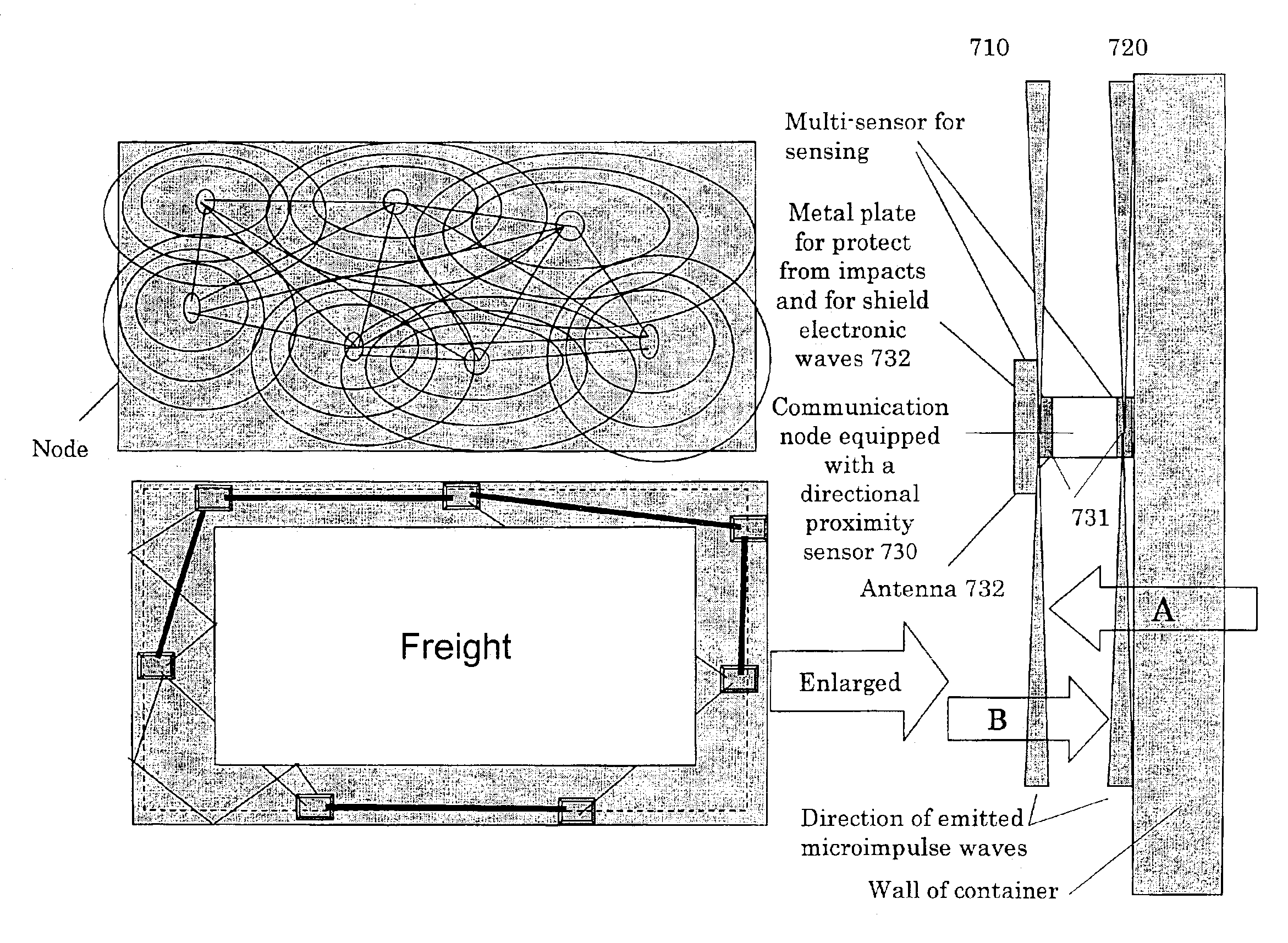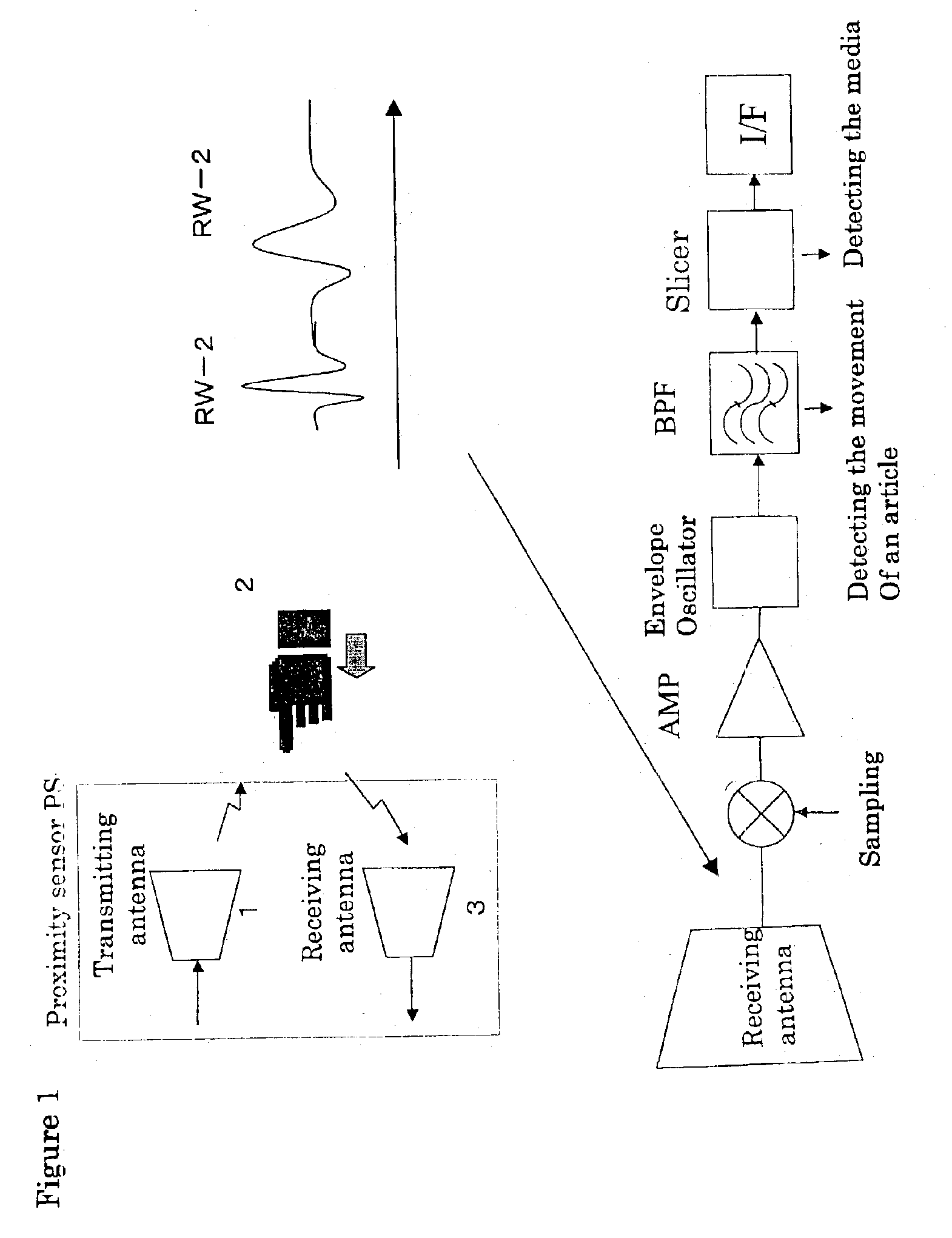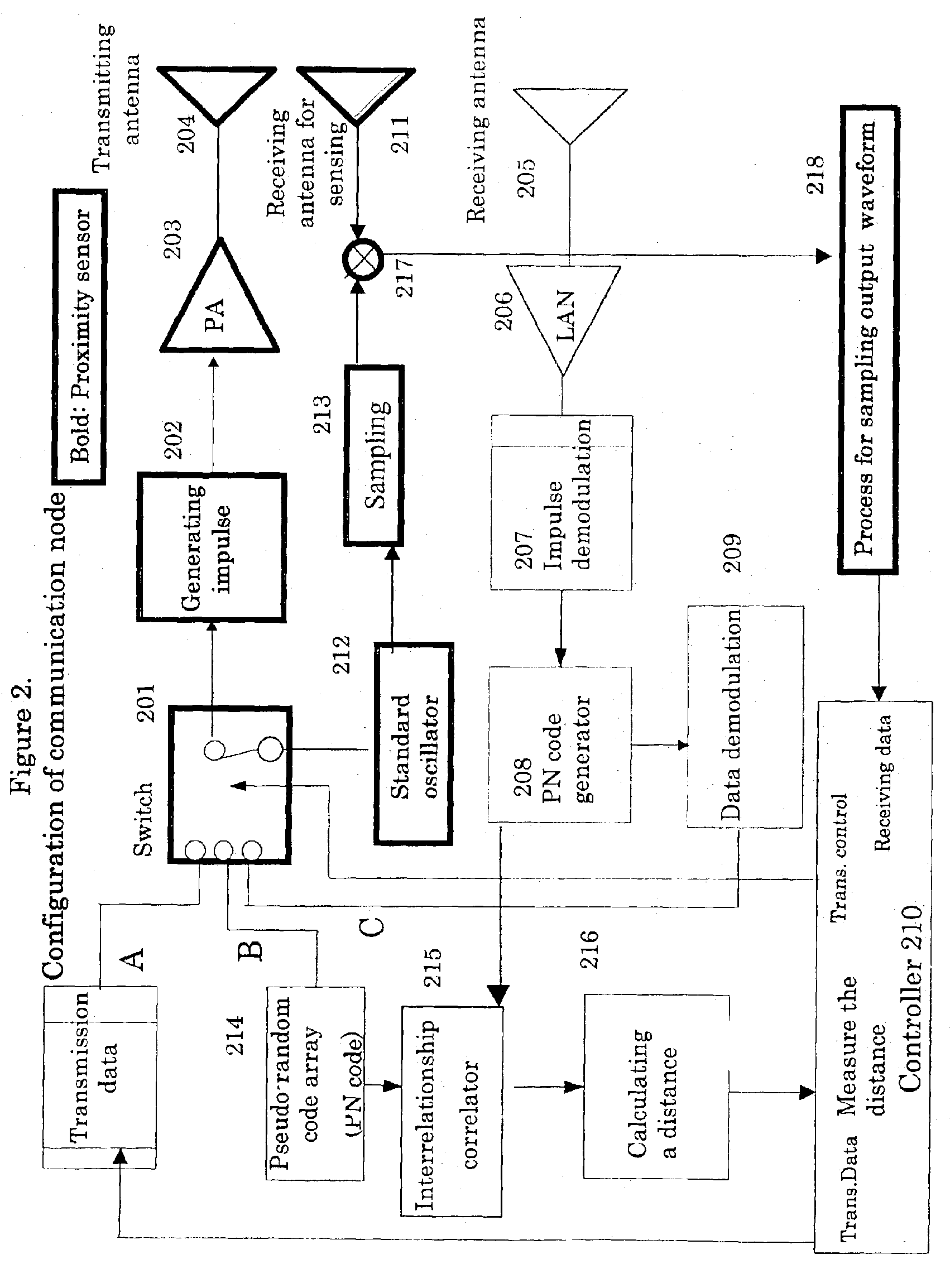Proximate sensor using micro impulse waves for monitoring the status of an object, and monitoring system employing the same
a technology of proximity sensor and proximity sensor, which is applied in the direction of electrical signalling details, instruments, burglar alarm mechanical actuation, etc., can solve the problems of not being able to detect the penetration of the wall of the container, unable to provide high security against terrorists, and prone to unlawful manipulation
- Summary
- Abstract
- Description
- Claims
- Application Information
AI Technical Summary
Benefits of technology
Problems solved by technology
Method used
Image
Examples
first embodiment
Proximity Sensing (First Embodiment)
[0044]Thus, in the data communications mode, the communication nodes 2 inside the object of surveillance, the container, share a variety of basic data relating to the data communication nodes, and then, the proximity sensing according to the present invention is implemented in the numerical order of the wireless communication nodes, or in some other specific order. What is meant by proximity sensing is that each of the communication nodes output a microimpulse wave, which when reflected off the objects situated inside the container (the transport cargo), allows data regarding the distance between the objects and the proximity sensors, the strength of the reflections, and in the case of movement, the speed of that movement to be detected. More specifically, the object of surveillance, the inside of the container, is thereby guaranteed to be in a safe state. For example, if a regular shipping worker loads the container and then, prior to its being s...
second embodiment
Proximity Sensing (Second Embodiment)
[0049]The second embodiment of proximity sensing according to this invention differs from the first embodiment's proximity sensor, which output three dimensional microimpulse waves from a transmitting antenna. As shown in FIG. 7, the proximity sensors output a plurality of film like layers that run approximately parallel to the inner walls of the container. More precisely, each communication node 730 is equipped with a directional proximity sensor having a plurality of slots 731 (in this example, two slots) of a specific width. The structure is such that microimpulse waves 710 and 720 emitted through these two slots 731 are output in a direction that is parallel to the side wall of the container. A metal plate 732 having the required properties is installed on the side facing the inside of the container over each of the directional proximity sensor-equipped communication nodes 730 in order to protect them from impacts and to shield their electron...
PUM
 Login to View More
Login to View More Abstract
Description
Claims
Application Information
 Login to View More
Login to View More - R&D
- Intellectual Property
- Life Sciences
- Materials
- Tech Scout
- Unparalleled Data Quality
- Higher Quality Content
- 60% Fewer Hallucinations
Browse by: Latest US Patents, China's latest patents, Technical Efficacy Thesaurus, Application Domain, Technology Topic, Popular Technical Reports.
© 2025 PatSnap. All rights reserved.Legal|Privacy policy|Modern Slavery Act Transparency Statement|Sitemap|About US| Contact US: help@patsnap.com



